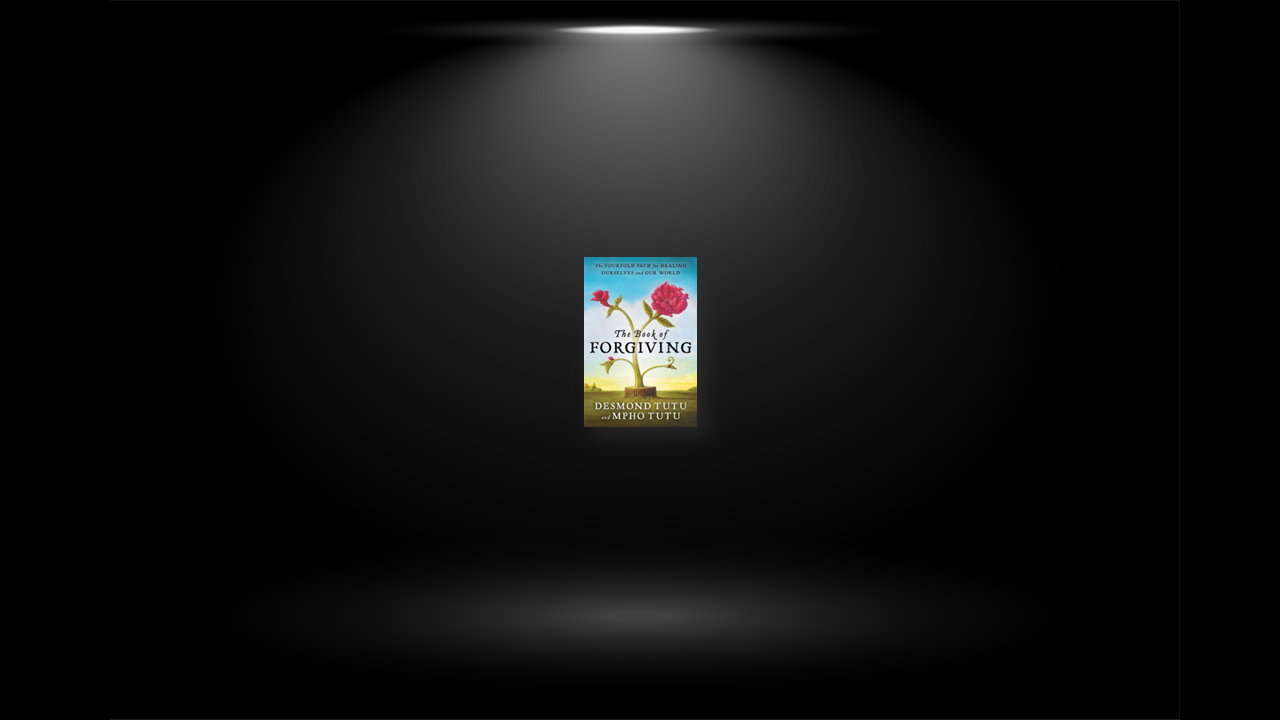Why Forgive?
Forgiveness is beneficial to our health. Forgiveness offers freedom from the past, from a perpetrator, from future victimization. Forgiveness heals families and communities. We forgive so we don’t suffer, physically or mentally, the corrosive effects of holding on to anger and resentment. We are all interconnected and have a shared humanity. Forgiveness is a gift we give to ourselves.
What Forgiveness Is Not
Forgiveness is not easy—it requires hard work and a consistent willingness. Forgiveness is not weakness—it requires courage and strength. Forgiveness does not subvert justice—it creates space for justice to be enacted with a purity of purpose that does not include revenge. Forgiveness is not forgetting—it requires a fearless remembering of hurt. Forgiveness is not quick—it can take several journeys through the cycles of remembering and grief before one can truly forgive and be free.
Understanding the Fourfold Path
Nothing is unforgivable. There is no one who is beyond redemption, and to deem someone a monster is to take away that person’s accountability for his or her actions. We always have a choice whether to walk the Revenge Cycle or the Forgiveness Cycle. In the Revenge Cycle, we reject our pain and suffering and believe that by hurting the person who hurt us our pain will go away.
In the Forgiveness Cycle, we face our pain and suffering and move toward acceptance and healing by walking the Fourfold Path. These are the steps of the Fourfold Path: Telling the Story, Naming the Hurt, Granting Forgiveness, and Renewing or Releasing the Relationship.
Telling the Story
Speak the truth. Start with the facts. Tell your story first to a friend, loved one, or trusted person. Consider telling the story to the person who harmed you, or writing a letter. Accept that whatever has happened cannot be changed or undone.
- Open your journal and write your story. Fill as many pages as you need.
- Writing is a very powerful way to tell your story. As you write, you may remember details you did not recall when you were speaking.
- If you feel safer or more comfortable, you can always read what you have written to a person you love and trust.
- Later you may choose to read or send what you have written to the perpetrator, but we encourage you to first continue along the Fourfold Path. The story is only the beginning.
Naming the Hurt
Identify the feelings within the facts. Remember, no feeling is wrong, bad, or invalid. Recognize the stages of grief, and honor wherever you fall in the process. Find someone who will acknowledge you and listen to your feelings without trying to fix them. Accept your own vulnerability. Move forward when you are ready.
- Write down all the things you have lost. What did you lose? Did you lose your trust? Did you lose your safety? Did you lose your dignity? Did you lose someone whom you loved? Did you lose something that you cherished?
- Now name the feelings that accompany these losses. I am angry. I am sad. I am heartbroken. I am afraid. Feel free to use your own words. What does your heart tell you? What is the weight of this loss? Name it so you can heal it.
Granting Forgiveness
Forgiveness is a choice. We grow through forgiving. Forgiving is how we move from victim to hero in our story. We know we are healing when we are able to tell a new story.
- Begin by writing down a story of the person who harmed you. What do you know about this person? If you do not know them, what can you find out about them? What do you have in common? In what ways are you similar?
- What have you lost by not being able to forgive? Has this inability to forgive harmed you and the ones you love?
- Now write down how this painful experience has actually made you stronger. How has it helped you grow and have empathy for others? How has it ennobled you?
- Finally, write your story again but this time not as the victim but as the hero. How did you deal with the situation, how have you grown, and how will you prevent such harm from happening to others?
Renewing or Releasing the Relationship
The preference is always to renew unless there is a question of safety. Ask for what you need from the perpetrator in order to renew or release the relationship. You may need an apology, an explanation, a tangible object, or to never see that person again. Look at your part in any conflict.
When you renew a relationship, it is stronger for what you have been through, but it is always different. By renewing or releasing a relationship you free yourself from victimhood and trauma.
- Was it possible to make something beautiful from what you had?
- How difficult was it to do so?
- How closely did your new creation resemble the item you damaged?
- Could it serve the same function as the original?
- What did you learn about renewing and releasing as you engaged in this exercise?
Needing Forgiveness
Gather support as needed. Admit the wrong. Witness the anguish and apologize. Ask for forgiveness. Make amends or whatever restitution or reparation is called for or needed. Honor your victim’s choice to renew or release the relationship.
Forgiving Yourself
We become imprisoned in the past when we do not forgive ourselves for past mistakes. If you have not sought forgiveness from your victim, do so. Forgiving yourself will be easier after you have sought forgiveness from your victim. We do not heal in isolation. Connecting with others is how we develop compassion for others and for ourselves.
A World of Forgiveness
All of us must walk our own paths, at our own pace. All of us write our own books of forgiving every single day. What will be in your book? Will it be a story of hope and redemption, or misery and resentment? In the end, the forgiveness you seek, whether it’s for another or for yourself, will never be found in a book. You carry it with you in your heart. It is described by your humanity. You just need to look inside and discover it—discover the power it has to change your life and to change our world.


